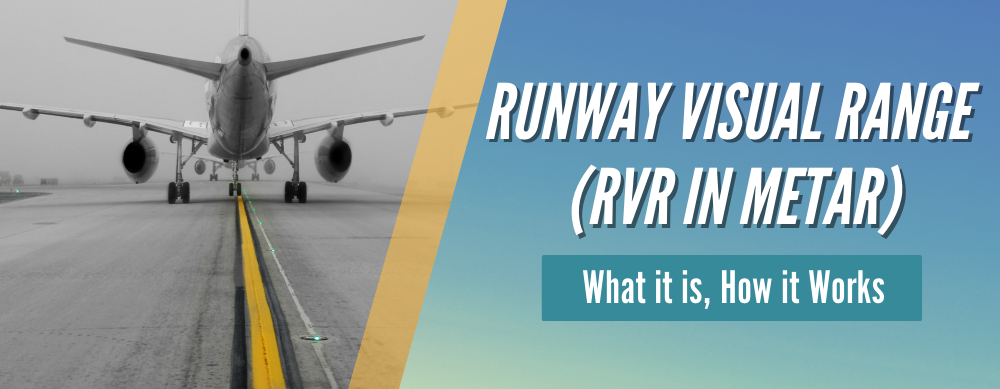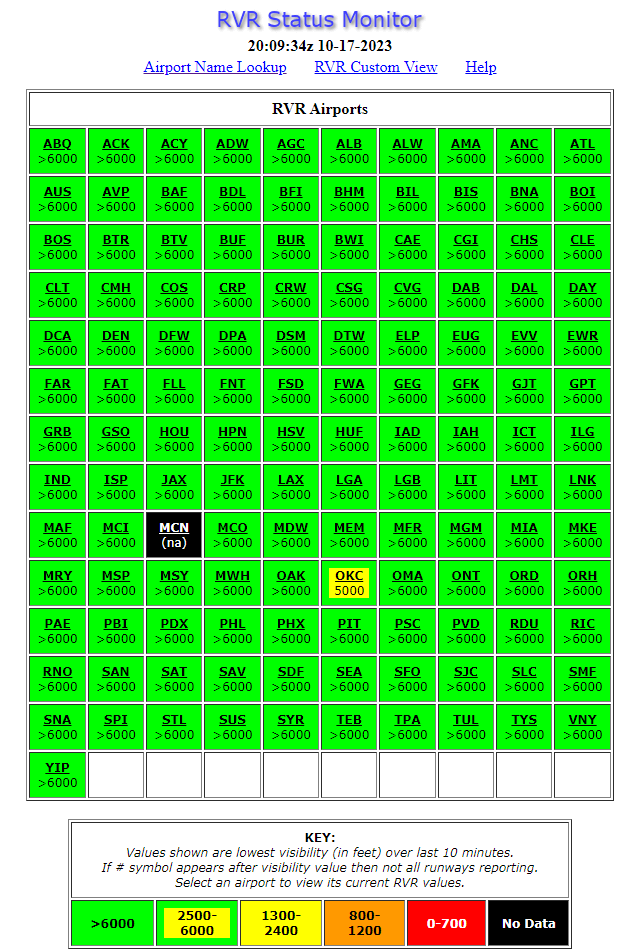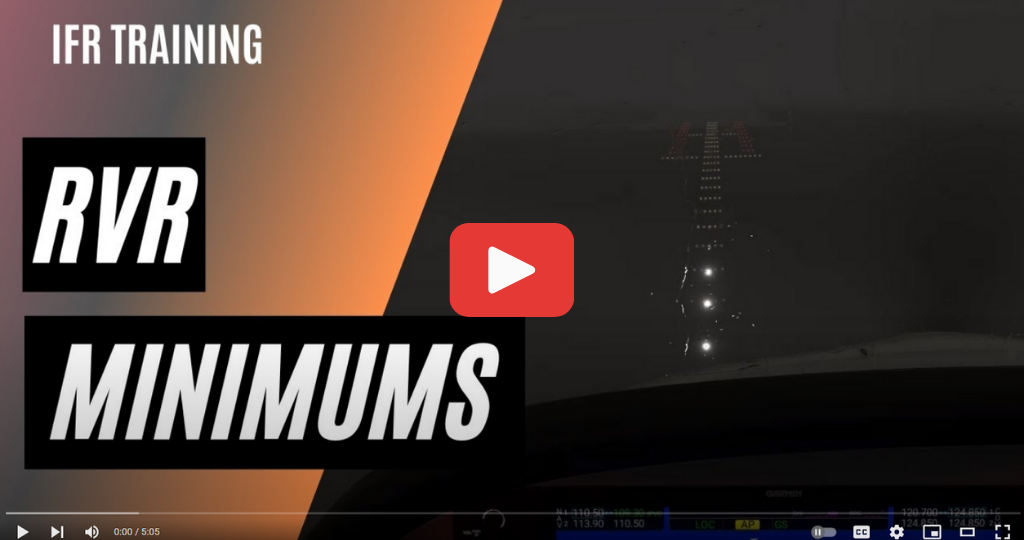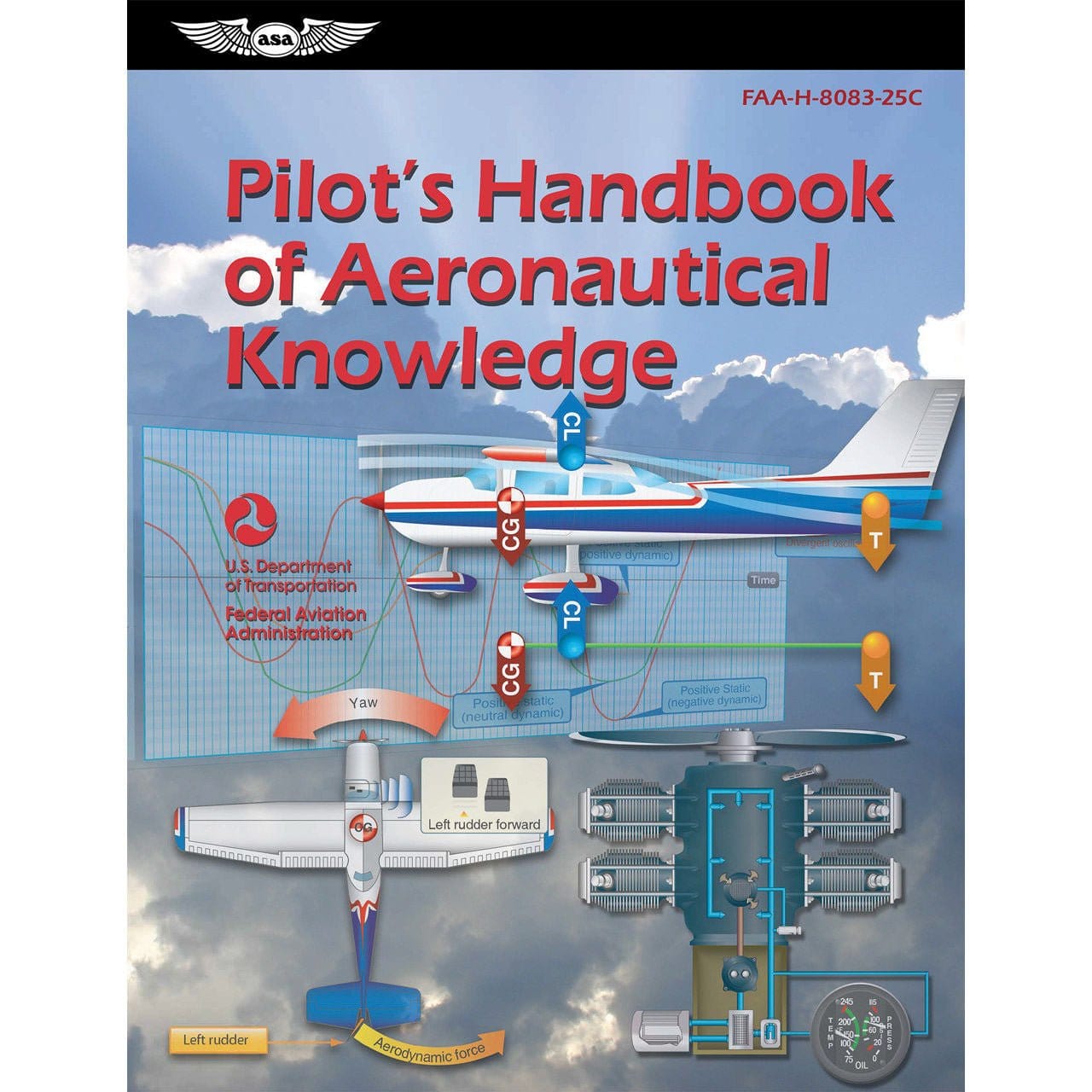If you've ever studied how to read METARs, then you may have noticed an "R" symbol followed by a runway number. That's an RVR and only appears in a METAR when visibility is low. What does this tell us as pilots, why is it important?
In this article, we will discuss what RVR information means for pilots and why it is essential to comprehend them.
Let's get to it!
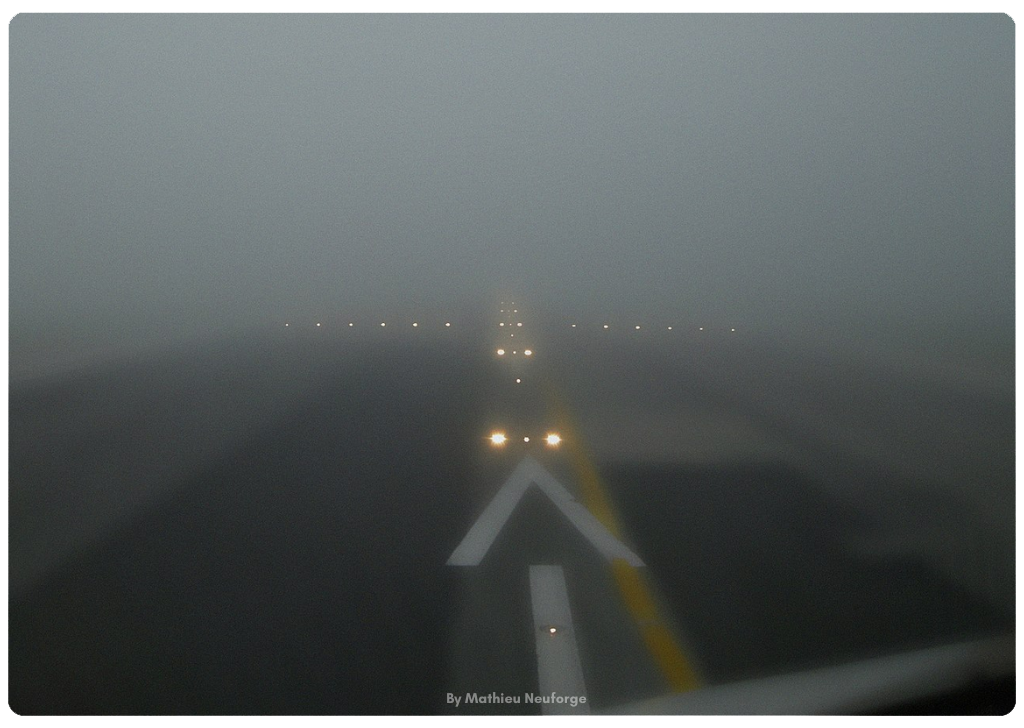 What is RVR?
What is RVR?
The runway visual range is the distance visible from the cockpit when the aircraft is on the centerline ready for take-off or landing. RVR systems are meant to provide both pilots and air traffic controllers with useful information about the visibility of the runway in conditions such as fog, snow, sandstorms, or precipitation(rain).
To sum it all up, the RVR report is typically found to help determine whether it is appropriate to fly or land during periods of limited visibility.
Where to Find the Runway Visual Range Meters
In the United States, measurements on an RVR report are usually expressed in feet and are only available at airports that have runways equipped with an RVR system. If the METAR indicates visibility in statute miles, then the runway most likely lacks the necessary equipment for RVR.
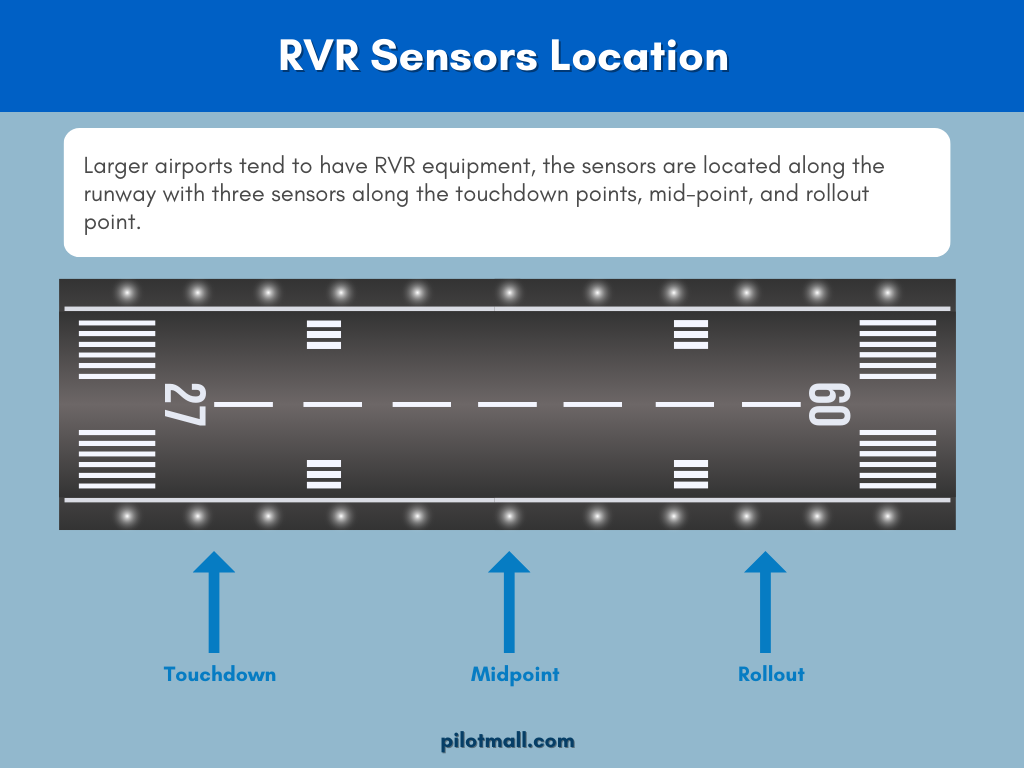
On the Runway
Larger airports tend to have RVR equipment. Most runways with RVR sensors are located along the runway surface markings with three sensors which are the touchdown sensor, the mid-point sensor, and the rollout sensor.
The RVR visibilities could be reported up to four designated runways at an airport and are based on what can be seen on the runway, such as High Intensity Runway Lights (HIRL) which is a series of lights that are aligned along both sides and the center of the runway.

How is RVR reported On a METAR?
A runway visual range METAR codes the runway with the letter "R" in an aviation weather report, followed by the runway number and four digits that inform of the distance in feet. The prevailing visibility is listed in statute miles and fractions.
In the example image, in order to the read RVR we need to decode the METAR. If it reads R24/1000FT, this indicates that on runway 24 the visual range of sight is up to 1000 feet.
RVRs can also be obtained by air traffic control and provided to aircraft that are making approaches.

On an Approach Plate
The reported visibility RVR on an approach plate is visible beside the approach minimums. Pilots must be able to see the runway environment before they can move below the Decision Altitude (DA) or Minimum Descent Altitude (MDA).
 RVR Values
RVR Values
The visibility reported for RVR begins at 100 feet and increases in increments of 100 feet until 1,000 is reached, after that, it jumps to 200 feet up to 3,000. From there, the increments become larger by 500 feet until the maximum range of 6,000 is attained.
Runway Visual Range RVR Vs. Visibility
When pilots begin learning about RVR, they are often confused about the difference between Runway Visual Range and Visibility. Although both RVR and visibility measure if there is enough visibility for landing or taking off on the runway, it is easy to mistake them for the same thing at first glance.
Visibility represents the greatest safe distance from which an object can be seen. The Runway Visual Range is more accurate visibility information that is specific to that particular runway with the aircraft on the centerline.
Types of Visibility
Flying requires a deep understanding of visibility as a pilot. Being able to comprehend and differentiate the three types of visual range is essential to becoming a skilled pilot.
Those three types are:
-
Runway Visual Range
-
Ground Visibility
-
Flight Visibility
 Why the RVR is Important
Why the RVR is Important
Understanding what an RVR is is important for pilots wanting to carry out instrument approaches and figuring out their take-off minimums.
RVR is used as a main factor in setting minima on instrument approaches since the pilot needs to be able to see the runway before touching down. This means that IFR pilots can know in advance if they should "go missed" on their instrument approach or plan a route to their alternate.
This information is valuable to VFR pilots as well since they will need to know if the visibility requirements allow them to legally fly to that airport under VFR.
We recommend checking out the FAA's article on RVR.
Where to Find More RVR Information
The FAA provides an RVR status monitor site where you can look up the airport name to see if it has RVR.
Flightinsight posted an amazing video on Runway Visual Range minimums and utilizing them in a real-life instrument approach scenario.

|
ASA The Pilot's Manual: Instrument FlyingWhen we say the Pilot’s Manual: Instrument Flying Eighth Edition has everything you need to know to pass the FAA exams and Instrument Flight Rules (IFR) checkride, we mean it. This thing is 640 pages long with 500, full-color illustrations. |
Takeaway
In aviation the skies are vast and the challenges are often unpredictable, we can see Runway Visual Range (RVR) as a guiding light to show the prevailing visibility in the face of uncertain weather conditions. Both pilots and air traffic controllers rely on RVRs, ensuring not only the safety of aircraft but also the smooth flow of operations at the airport.
As we learn more about aviation weather, the goal of all of these resources is to help us navigate through the clouded skies with both precision and care.
As aviation enthusiasts, we're reminded of a cherished pilot's quote, "The sky is not the limit; it's just the beginning."
Fly safe up there everyone!
Want to Learn More About Airports and Approaches?
Check out these guides:
Did you find this article helpful?
Do you think we missed anything important? Let us know in the comments below!

